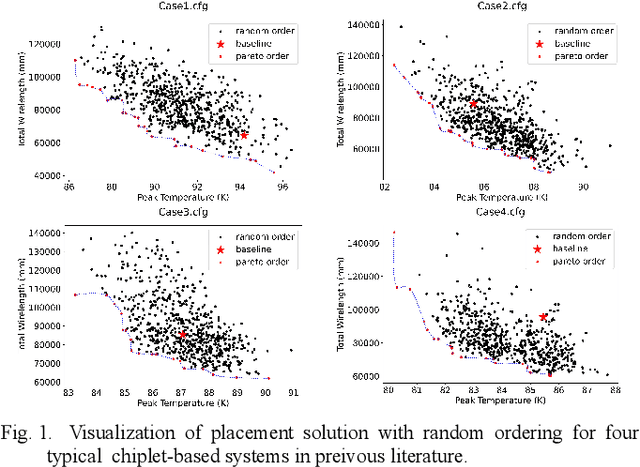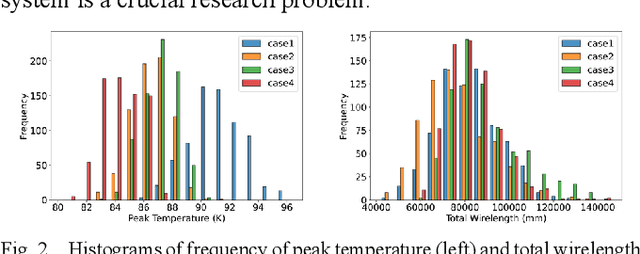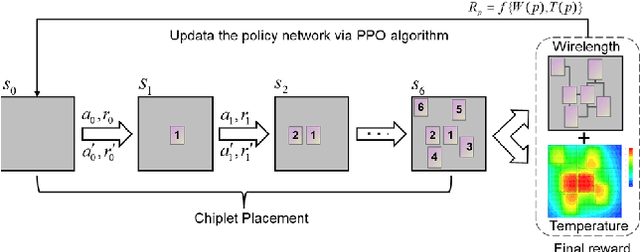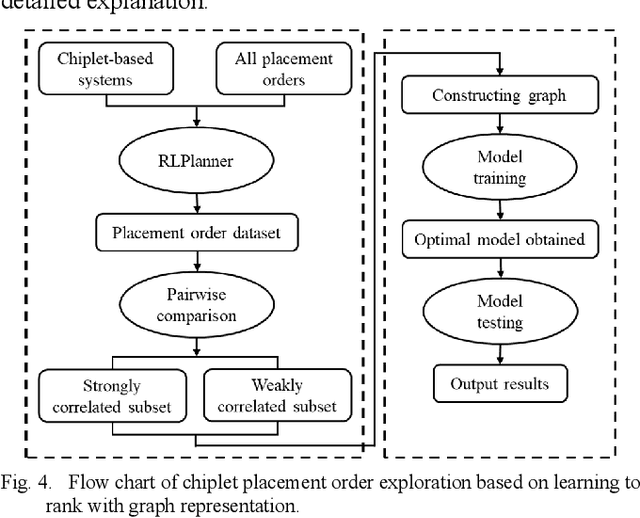Yuanyuan Duan
Hierarchical Decoupling Capacitor Optimization for Power Distribution Network of 2.5D ICs with Co-Analysis of Frequency and Time Domains Based on Deep Reinforcement Learning
Jul 02, 2024



Abstract:With the growing need for higher memory bandwidth and computation density, 2.5D design, which involves integrating multiple chiplets onto an interposer, emerges as a promising solution. However, this integration introduces significant challenges due to increasing data rates and a large number of I/Os, necessitating advanced optimization of the power distribution networks (PDNs) both on-chip and on-interposer to mitigate the small signal noise and simultaneous switching noise (SSN). Traditional PDN optimization strategies in 2.5D systems primarily focus on reducing impedance by integrating decoupling capacitors (decaps) to lessen small signal noises. Unfortunately, relying solely on frequency-domain analysis has been proven inadequate for addressing coupled SSN, as indicated by our experimental results. In this work, we introduce a novel two-phase optimization flow using deep reinforcement learning to tackle both the on-chip small signal noise and SSN. Initially, we optimize the impedance in the frequency domain to maintain the small signal noise within acceptable limits while avoiding over-design. Subsequently, in the time domain, we refine the PDN to minimize the voltage violation integral (VVI), a more accurate measure of SSN severity. To the best of our knowledge, this is the first dual-domain optimization strategy that simultaneously addresses both the small signal noise and SSN propagation through strategic decap placement in on-chip and on-interposer PDNs, offering a significant step forward in the design of robust PDNs for 2.5D integrated systems.
Chiplet Placement Order Exploration Based on Learning to Rank with Graph Representation
Apr 07, 2024



Abstract:Chiplet-based systems, integrating various silicon dies manufactured at different integrated circuit technology nodes on a carrier interposer, have garnered significant attention in recent years due to their cost-effectiveness and competitive performance. The widespread adoption of reinforcement learning as a sequential placement method has introduced a new challenge in determining the optimal placement order for each chiplet. The order in which chiplets are placed on the interposer influences the spatial resources available for earlier and later placed chiplets, making the placement results highly sensitive to the sequence of chiplet placement. To address these challenges, we propose a learning to rank approach with graph representation, building upon the reinforcement learning framework RLPlanner. This method aims to select the optimal chiplet placement order for each chiplet-based system. Experimental results demonstrate that compared to placement order obtained solely based on the descending order of the chiplet area and the number of interconnect wires between the chiplets, utilizing the placement order obtained from the learning to rank network leads to further improvements in system temperature and inter-chiplet wirelength. Specifically, applying the top-ranked placement order obtained from the learning to rank network results in a 10.05% reduction in total inter-chiplet wirelength and a 1.01% improvement in peak system temperature during the chiplet placement process.
RLPlanner: Reinforcement Learning based Floorplanning for Chiplets with Fast Thermal Analysis
Jan 16, 2024Abstract:Chiplet-based systems have gained significant attention in recent years due to their low cost and competitive performance. As the complexity and compactness of a chiplet-based system increase, careful consideration must be given to microbump assignments, interconnect delays, and thermal limitations during the floorplanning stage. This paper introduces RLPlanner, an efficient early-stage floorplanning tool for chiplet-based systems with a novel fast thermal evaluation method. RLPlanner employs advanced reinforcement learning to jointly minimize total wirelength and temperature. To alleviate the time-consuming thermal calculations, RLPlanner incorporates the developed fast thermal evaluation method to expedite the iterations and optimizations. Comprehensive experiments demonstrate that our proposed fast thermal evaluation method achieves a mean absolute error (MAE) of 0.25 K and delivers over 120x speed-up compared to the open-source thermal solver HotSpot. When integrated with our fast thermal evaluation method, RLPlanner achieves an average improvement of 20.28\% in minimizing the target objective (a combination of wirelength and temperature), within a similar running time, compared to the classic simulated annealing method with HotSpot.
 Add to Chrome
Add to Chrome Add to Firefox
Add to Firefox Add to Edge
Add to Edge